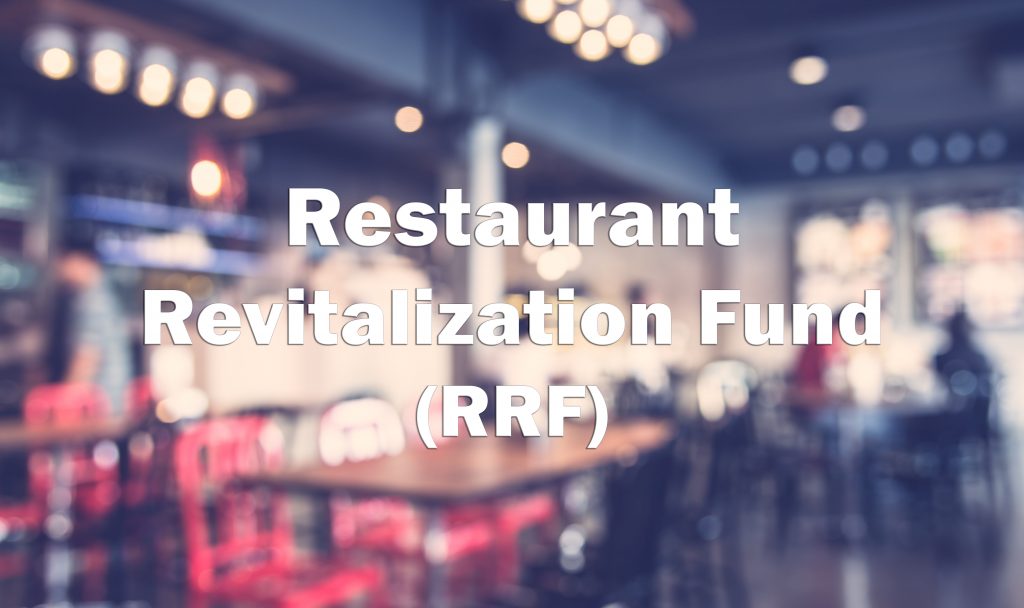 The Restaurant Revitalization Fund (RRF) was announced as part of the American Rescue Plan, released in March 2021. It contains vital support for small and medium-sized restaurants.
The Restaurant Revitalization Fund (RRF) was announced as part of the American Rescue Plan, released in March 2021. It contains vital support for small and medium-sized restaurants.
Applications will be accepted starting May 3, 2021 at 12 pm. Visit the SBA’s RRF website for full details.
Eligibility
The RRF will support places of business in which the public or patrons assemble for the primary purpose of being served food or drink. This includes:
- Restaurants
- Food stands, food trucks, food carts
- Caterers
- Bars, saloons, lounges, taverns
- Snack and nonalcoholic beverage bars
- Bakeries (onsite sales to the public comprise at least 33% of gross receipts)
- Brewpubs, tasting rooms, taprooms (onsite sales to the public comprise at least 33% of gross receipts)
- Breweries, microbreweries, wineries, and distilleries (onsite sales to the public comprise at least 33% of gross receipts)
- Inns (onsite sales of food and beverage to the public comprise at least 33% of gross receipts)
- Licensed facilities or premises of a beverage alcohol producer where the public may taste, sample, or purchase products
If you were eligible for and received Paycheck Protection Program, Economic Injury Disaster Loan (or Advance), or Earned Income Tax Credit funds you are STILL eligible for the RRF program.
Ineligible businesses include publicly traded companies, businesses that operate more than 20 locations, and state and local government-owned businesses. Additionally, businesses that closed permanently or applied for and received Shuttered Venue Operators Grant (SVOG) funds are ineligible for the RRF grants.
When can I apply?
The application portal opens May 3rd at 12 pm at www.restaurants.sba.gov.
The application will open to all at the same time but SBA will only process and fund priority group applications for the first 21 days. The priority group includes businesses that are majority-owned (51% or more) by Women, Veterans, and/or Socio-Economically Disadvantaged Individuals. Socio-Economically Disadvantaged Individuals are defined as those who have been subjected to racial or ethnic prejudice or cultural bias. See more details on this priority group at SBA’s website.
How to apply and what info to prepare?
Review the sample application here. Please note: You do NOT need to be registered through SAM.gov and are not required to get DUNS or CAGE numbers.
Additional documentation required:
- Tax Information: IRS Form 4506-T, completed and signed by Applicant.
- Gross Receipts Documentation such as:
- Business tax returns (IRS Form 1120 or IRS 1120-S)
- IRS Forms 1040 Schedule C; IRS Forms 1040 Schedule F
- For a partnership: partnership’s IRS Form 1065 (including K-1s)
- Bank statements
- Externally or internally prepared financial statements such as Income Statements or Profit and Loss Statements
- Point of sale report(s), including IRS Form 1099-K
- For brewpubs, tasting rooms, taprooms, breweries, wineries, distilleries, or bakeries: Documents evidencing that onsite sales to the public comprise at least 33% of gross receipts for 2019, which may include Tax and Trade Bureau (TTB) Forms 5130.9 or TTB. For businesses that opened in 2020, the original business model should have at least 33% of gross receipts in onsite sales to the public.
- For inns: Documents evidencing that onsite sales of food and beverage to the public comprise at least 33% of gross receipts for 2019. For businesses that opened in 2020, the original business model should have at least 33.00% of gross receipts in onsite sales to the public.
How much am I eligible for?
Nearly half of the funds are designated for businesses that have revenue below $1.5 million per year. This is an effort to get the money where it is needed the most, to the smallest businesses. The maximum funding amount per location is up to $5 million, not to exceed $10 million for anyone applicant and any affiliated business. The minimum award is $1,000.
Funding will be based on losses to gross receipts from 2019 to 2020 and calculations are as follows:
- For applicants in operation prior to or on January 1, 2019: 2019 gross receipts minus 2020 gross receipts minus PPP loan amounts
- For applicants that began operations partially through 2019: (Average 2019 monthly gross receipts x 12) minus 2020 gross receipts minus PPP loan amounts
- For applicants that began operations on or between January 1, 2020 and March 10, 2021 and applicants not yet opened but have incurred eligible expenses. Amount spent on eligible expenses between February 15, 2020 and March 11,2021 minus 2020 gross receipts minus PPP loan amounts
For this grant, gross receipts do not include PPP loans, EIDL (loans or advances), other state or local grants, or SBA Section 1112 payments.
Where can I find more details?
All available details can be found on the SBA RRF website.
Where can I get help?
A Maine SBDC business advisor can help you understand and access this program. Contact us here.
SBA is also offering to assist. Contact their call support center at 1-844-279-8898.